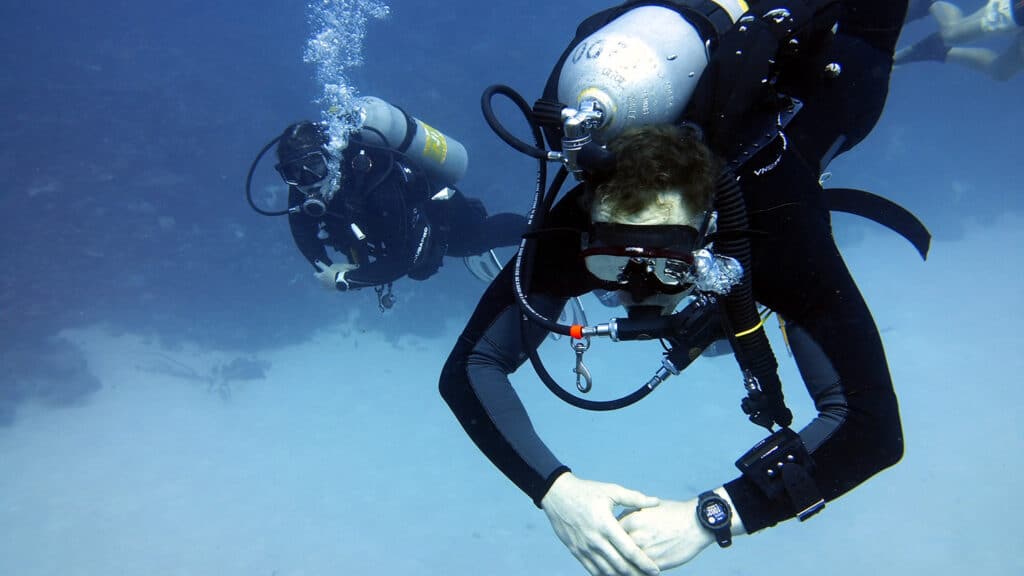A Deep Dive Into Bonaire’s Ecological and Geological Treasures



On May 6, a group of 12 students from the Department of Marine, Earth and Atmospheric Sciences (MEAS), the College of Engineering and the College of Natural Resources touched down on the Caribbean island of Bonaire. Freshly done with finals, they were eager to spend time in the sun and get in the water. But it wasn’t exactly a vacation. They were there as part of an immersive science diving program to explore ecological and geological change.
With its calm waters and coral restoration programs that keep its fringing reefs well-preserved, Bonaire is an ideal place to study coral reefs. Led by Lewis Owen, formerly the head of MEAS and now dean of the College of Sciences, David Eggleston, an MEAS professor and director of the Center for Marine Sciences and Technology, and Dan Bowling, an MEAS graduate student and dive instructor, the study abroad program focused on examining the marine and coastal settings of Bonaire above and below the water.
Before we say goodbye to summer, let’s take a trip down memory lane and dip our toes into the world of deep diving.
Diving Right In
Soon after arriving in Bonaire, the students completed skills tests at a local dive academy. After proving they could clear a flooded mask underwater, recover a dislodged regulator, remove and replace a buoyancy control device, and perform out-of-air buddy breathing and emergency ascent, it was time to dive into the course activities.



Restoring Reefs
A primary focus of the trip was reef restoration. The students took a reef renewal course, where they learned how to clean coral trees and hang coral fragments on them. Afterward, they put their skills to the test at the Calabas Reef dive site.
“Cleaning the coral trees was a really relaxing experience, like tending to an underwater garden,” said Roman Peace, a computer science major.



Diving After Dark
Some of the highlights of the trip were the night dives. After sundown, students waded into the water with flashlights and encountered all sorts of sea creatures. One night, they saw ostracods — a class of crustaceans that only come out a few days a month — rise up and eject luminescent compounds that lit up the water.
“It looked like a scene out of Avatar,” said Owen.
The group also came across green sea turtles, octopus, sea horses, slipper lobsters, eels, schools of small fish and fluorescent coral — and even had a tarpon follow them around.
“It was cool to see the corals under UV light because they glowed orange and sometimes green,” said Emily Havard, an MEAS graduate student.


Taking the Plunge
The group’s deepest dive went swimmingly. They descended nearly 90 feet underwater to explore the Hilma Hooker site, where a ship sank between two reefs. The deeper a diver goes into the water, the higher the risk of nitrogen narcosis, or an altered state of consciousness caused by the anesthetic effect of certain gasses at high pressure.
But the students had gained enough confidence in their diving skills to successfully complete the excursion. They circled the ship clockwise, following the starboard up and onto the reef before making their way to shore.



Exploring Terrestrial Life
The class took a break from their aquatic adventures to visit some of the island’s on-land attractions. A student favorite was a sanctuary housing over 800 carrot-loving donkeys.
“We ran out of carrots in the first 100 feet of the drive,” said Dylan Dixon, a mechanical engineering major.

